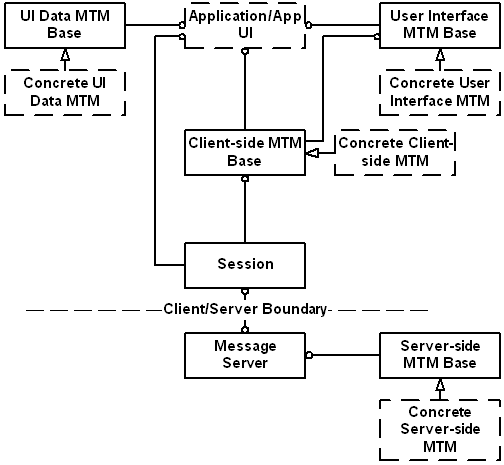The following figure shows the logical structure of the Messaging Architecture. Dashed boxes indicate components that can be developed by third-parties.

Messaging overview
Note that no lower-level communication components are shown, as the Messaging Architecture is designed to be independent of any particular communication protocol. Instead, communications libraries are accessed as needed by Server-side MTMs. For example, an SMTP MTM would use TCP/IP, while the SMS MTM would use the Telephony Server (ETel).
The following list summarises the components.
These are base classes required for implementing protocol-specific MTM components. User Interface and UI Data MTMs handle user interface functionality and resources. Client-side MTMs provide message data handling functions. Server-side MTMs provide message transport functions.
The Message Server handles all requests to access or manipulate message data. Where necessary, it passes requests to the protocol-specific message transport components, the Server-side MTMs.
Sessions allow client-side components to issue requests to the Message Server. There are a number of classes provided to clients that allow message entries to be manipulated.